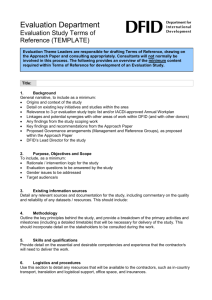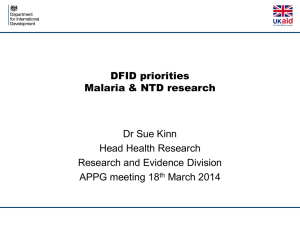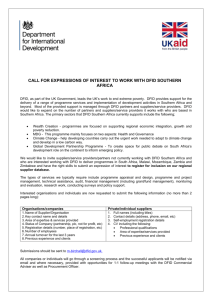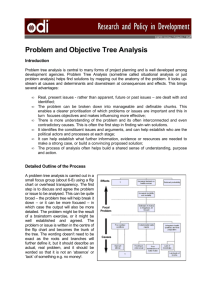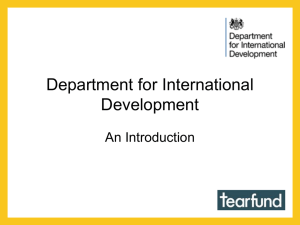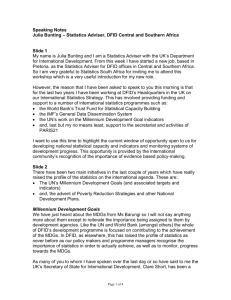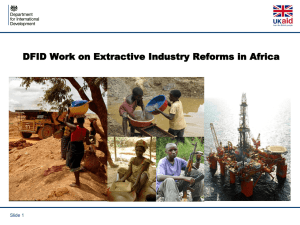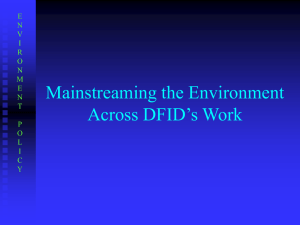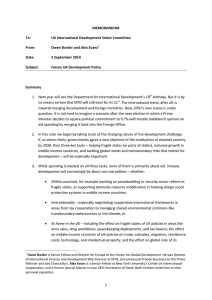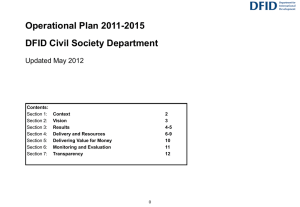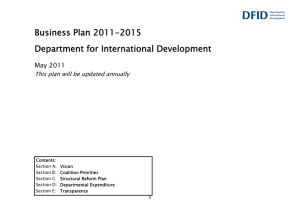Below are some elements from these guidelines, however please
advertisement
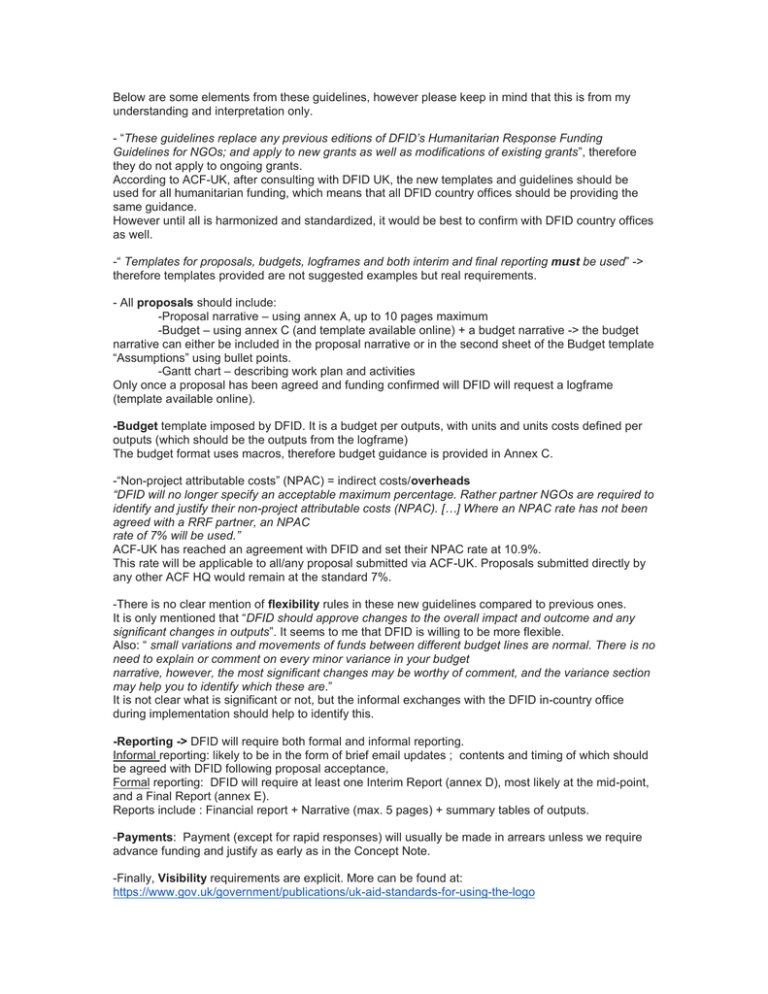
Below are some elements from these guidelines, however please keep in mind that this is from my understanding and interpretation only. - “These guidelines replace any previous editions of DFID’s Humanitarian Response Funding Guidelines for NGOs; and apply to new grants as well as modifications of existing grants”, therefore they do not apply to ongoing grants. According to ACF-UK, after consulting with DFID UK, the new templates and guidelines should be used for all humanitarian funding, which means that all DFID country offices should be providing the same guidance. However until all is harmonized and standardized, it would be best to confirm with DFID country offices as well. -“ Templates for proposals, budgets, logframes and both interim and final reporting must be used” -> therefore templates provided are not suggested examples but real requirements. - All proposals should include: -Proposal narrative – using annex A, up to 10 pages maximum -Budget – using annex C (and template available online) + a budget narrative -> the budget narrative can either be included in the proposal narrative or in the second sheet of the Budget template “Assumptions” using bullet points. -Gantt chart – describing work plan and activities Only once a proposal has been agreed and funding confirmed will DFID will request a logframe (template available online). -Budget template imposed by DFID. It is a budget per outputs, with units and units costs defined per outputs (which should be the outputs from the logframe) The budget format uses macros, therefore budget guidance is provided in Annex C. -“Non-project attributable costs” (NPAC) = indirect costs/overheads “DFID will no longer specify an acceptable maximum percentage. Rather partner NGOs are required to identify and justify their non-project attributable costs (NPAC). […] Where an NPAC rate has not been agreed with a RRF partner, an NPAC rate of 7% will be used.” ACF-UK has reached an agreement with DFID and set their NPAC rate at 10.9%. This rate will be applicable to all/any proposal submitted via ACF-UK. Proposals submitted directly by any other ACF HQ would remain at the standard 7%. -There is no clear mention of flexibility rules in these new guidelines compared to previous ones. It is only mentioned that “DFID should approve changes to the overall impact and outcome and any significant changes in outputs”. It seems to me that DFID is willing to be more flexible. Also: “ small variations and movements of funds between different budget lines are normal. There is no need to explain or comment on every minor variance in your budget narrative, however, the most significant changes may be worthy of comment, and the variance section may help you to identify which these are.” It is not clear what is significant or not, but the informal exchanges with the DFID in-country office during implementation should help to identify this. -Reporting -> DFID will require both formal and informal reporting. Informal reporting: likely to be in the form of brief email updates ; contents and timing of which should be agreed with DFID following proposal acceptance, Formal reporting: DFID will require at least one Interim Report (annex D), most likely at the mid-point, and a Final Report (annex E). Reports include : Financial report + Narrative (max. 5 pages) + summary tables of outputs. -Payments: Payment (except for rapid responses) will usually be made in arrears unless we require advance funding and justify as early as in the Concept Note. -Finally, Visibility requirements are explicit. More can be found at: https://www.gov.uk/government/publications/uk-aid-standards-for-using-the-logo
